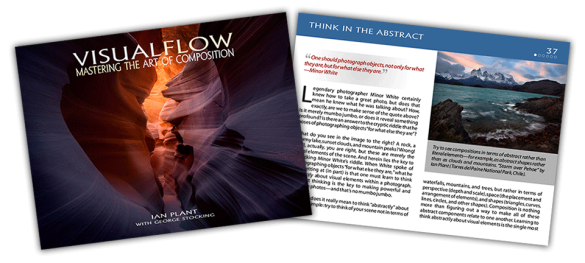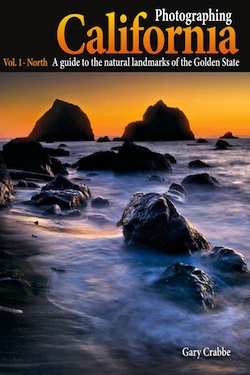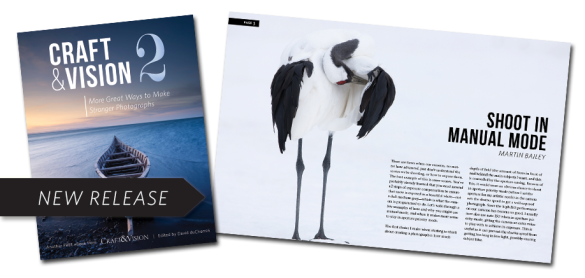Some interesting books have been released recently that I think my readers might be interested in:
Visual Flow: Mastering the Art of Composition
by Ian Plant, with George Stocking
287 pages
24.95
Visual Flow: Mastering the Art of Composition is an ambitious eBook that delves deeply into what could be the most important aspect of photography: composition. But composition is a difficult subject to talk about, and teach, because of its complexity. Every situation a photographer encounters is different, and no rules or formulas can encompass all the variables.
Ian puts this well: “The ‘rules’ do not dictate whether a composition is good or not; rather, a composition either works or it doesn’t, and the ‘rules’ are merely an attempt (with the benefit of 20/20 hindsight) to assess common features of successful compositions. This is vitally important to remember: the ‘rules’ flow from successful compositions, not the other way around.”
I couldn’t agree more, and Ian and I are in complete agreement about this too: “Learning to think abstractly about visual elements is the single most important thing you can do to improve your compositional skills.” The less you think about the subject, and the more you think about the underlying abstract design – the lines, shapes, and patterns – the better you compositions will be.
While just reading any book won’t make you a master of composition, this volume presents a lot interesting ideas, and fresh ways of thinking about this subject that will help any photographer make better compositions. The type can be a little difficult to read at times, but that’s a small flaw, and the overall content is exceptional. Visual Flow is available directly through Ian Plant’s online store.
Photographing California: Vol. 1 – North
by Garry Crabbe
432 pages
29.80 list price (usually less through Amazon)
Gary Crabbe has written an impressively large and comprehensive guide to photographing northern California. Although he includes San Francisco, and a few other manmade subjects, the book is primarily focused on the beautiful and abundant natural landscapes of the state.
These include, of course, northern California’s three national parks – Yosemite, Lassen, and Redwood – but also lesser-known, highly-photogenic sites like Bowling Ball Beach, Mt. Shasta, Mossbrae Falls, and many others. There’s enough material in this book for a lifetime of photographic exploration.
There’s probably nobody better qualified to write this guide than Gary. He’s been the principle photographer for six previous books on California, so he’s spent a lot of time exploring the state looking for great photo locations. And the book is filled with beautiful images. It’s one thing to read a description of a place; it’s another to see a photograph that shows the true potential of a location.
But having said that, a photography guidebook like this works best when you think of it as a starting point, rather than a recipe book. Use it to help you find some great locations, and give you ideas about how and when to photograph those spots, but from there you can explore and find endless new possibilities.
If you live in California, or plan on visiting, this book will fuel your imagination and lead you to some great spots that you might not otherwise find. Photographing California: Vol. 1 – North is available through Amazon.
Craft & Vision 2: More Great Ways to Make Stronger Photographs
45 speads
free
Last but not least, Craft & Vision has released another free eBook. This new volume has nine articles by six different authors. I particularly liked Martin Bailey’s piece, “Shoot in Manual Mode.” Many people assume that they should use aperture- or shutter-priority mode for photographing moving subjects, but Martin clearly explains why manual mode will give you a higher percentage of good exposures in these situations.
There are three articles by David duChemin, who always has interesting things to say. His piece, “Learn to Isolate,” tackles one of the most essential aspects of photography composition. And Piet Van den Eynde, author of the Lightroom 4 Unmasked ebook I reviewed last November, talks about the virtues of getting it right in the camera in his article, “Shoot More, Develop Less.”
Yes, Craft & Vision 2 is free, and if you haven’t done so before you should pick up a copy of Craft & Vision’s first free eBook, which includes my article “Learn to Direct the Eye.”
— Michael Frye
Related Posts: New eBook by Jim Goldstein; New eBook: A Deeper Frame by David duChemin; New eBook: Exposure for Outdoor Photography
Michael Frye is a professional photographer specializing in landscapes and nature. He is the author and photographer of The Photographer’s Guide to Yosemite, Yosemite Meditations, and Digital Landscape Photography: In the Footsteps of Ansel Adams and the Great Masters, plus the eBooks Light & Land: Landscapes in the Digital Darkroom, and Exposure for Outdoor Photography. He has written numerous magazine articles on the art and technique of photography, and his images have been published in over thirty countries around the world. Michael has lived either in or near Yosemite National Park since 1983, currently residing just outside the park in Mariposa, California.












Thanks for the review, Michael, and as much for your contribution to the book. I was happy to be able to recommend your book and app as a valuable resource as well. Additionally stated in the book, and I’m in 1000% agreement with, the book should serve as a starting point, not a blueprint. Personal research before, and personal vision while on location will yield far more expressive and unique images than merely trying to copy something you’ve seen in a book.
You’re very welcome Gary — thanks for writing the book! I know a ton of work went into it, and it shows.
As it is, it’s difficult to access the river and most of the meadow- there are no paths alongside most of the two, and mostly, one can see these from the car, only (unless one decides to go on a 15 mile trek- an all day excursion for most of us). But that’s bull#%^. And their wooden fencing is very unobtrusive- I don’t see anything wrong with it as is. But, of course, additional fencing would be unacceptable, but so is limiting access to everything thst majes Yosemite so wonderful. You see, the whole intent is to keep people as far away as possible from all this beauty, and unhappy to boot, so that it all becomes a club. The few privileged will enjoy Yosemite and why, the rest, they aren’t worthy of it anyway. So keep them in their parking lots and in their cars.
The photos are gorgeous, though.
I understand that those are the products designed by manufacturers to
make them money and if they are endorsed by winning popular professionals, sales will be high.
At the same time, web games seemed like the future of gaming, and we wanted to be a part of
it. If you want to be able to hit the ball further
and harder, you should keep in mind to keep your grip on the
bat loose, your swing should begin with your legs and hips, and finally, you must always
follow your bat through.